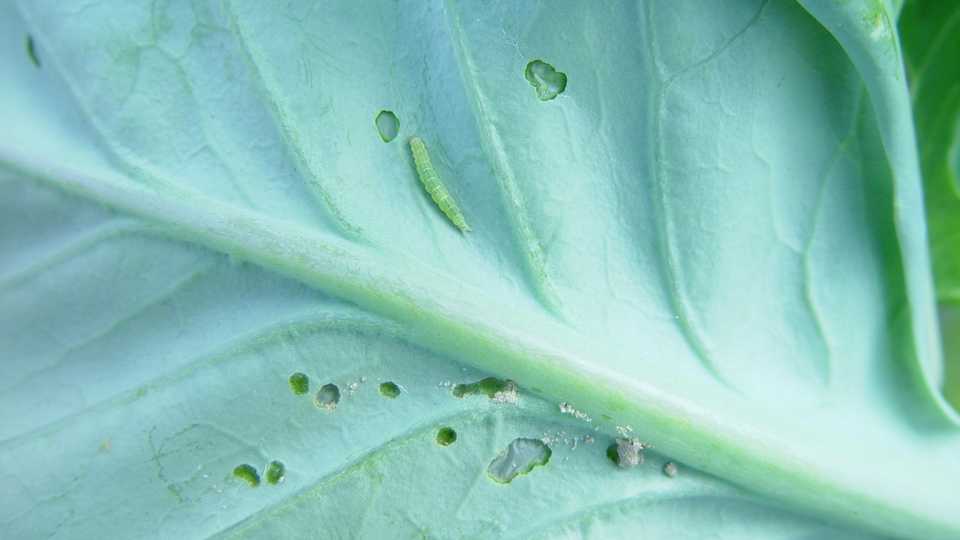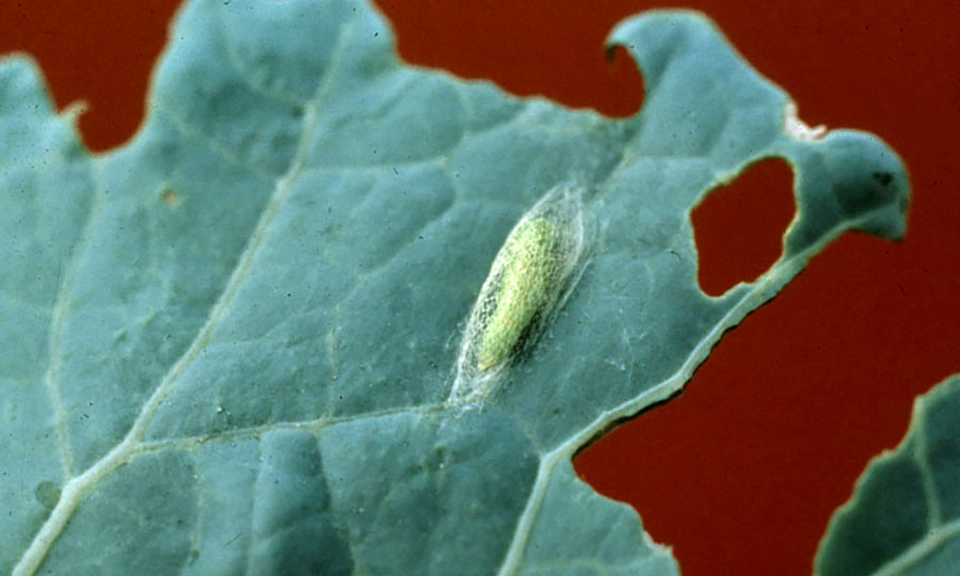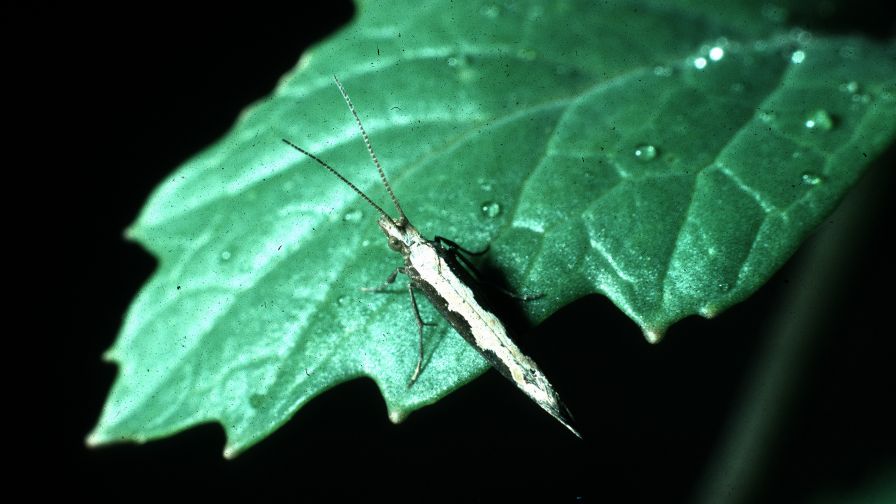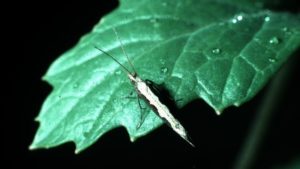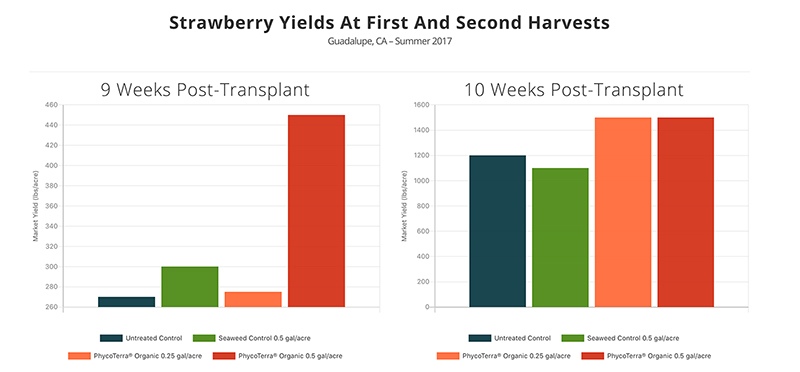Defend Your Veggie Crop from Diamondback Moth
The diamondback moth (Plutella xylostella) is one of the most destructive pests of crucifers in Florida. Introduced from Europe, it can now be found worldwide and attacks virtually all cruciferous vegetable crops.
Diamondback moth are gray in color with a wingspread of less than one inch and move rapidly when disturbed. Males display three yellowish, diamond-shaped markings on the back when the wings are folded together.
Larvae are light green, slightly tapered at each end, and covered with tiny, erect black hairs. When full grown, they are about 1/3-inch long. They wiggle rapidly when disturbed, often dropping from the plant and hanging by silken threads.
Plant damage is caused either by larva that feed on all parts of host plants, chewing small holes in leaves, or larva that feed superficially, leaving a thin layer of intact tissue and creating a windowpane effect.
Survival and Spread
Female moths lay eggs singly or in groups of two or three on the leaves or stalk near the terminal bud of host crops. Eggs are small, spherical, yellowish to white, and hatch in five to six days, depending on temperature.
The larval stage consists of four instars and depends on temperature, food supply, and other factors. Pupae are encased in loosely woven, gauze-like cocoons fastened to the leaves or other parts of host plants. Their presence may render produce unmarketable or reduce grade.
Cruciferous weeds are important hosts acting as a source of infestation for cultivated crops.
Management Methods
Pheromone traps are helpful in monitoring adult populations and help predict larval populations 11 to 21 days later. One or more holes per plant is often used as a threshold level, but control recommendations should be based on trap and larval counts, plant growth stage, weather, and natural enemies.
This insect has become increasingly difficult to control. In recent years, resistance to insecticides has become widespread and includes most classes of insecticides, including some Bt (Bacillus thuringiensis) products.
Protecting crucifer crops from damage often requires applying insecticide to plant foliage, sometimes as often as twice per week. A high-pressure (>200 psi) sprayer plus a spreader sticker added to the spray solution, will help ensure complete coverage, especially to the undersides of leaves where larvae are most often found.
Rainfall is a major mortality factor for young larva, and wet weather may reduce adults and infestations. Since adults may carry over between crops, cultural controls such as separation of crops in time and space and sanitation are important, including rapid crop destruction after harvest.
Rotations that incorporate the use of Bts and other soft pesticides are especially important as they parasitoid survival. Reducing the use of insecticides, pyrethroids in particular, can sometimes improve diamondback control by favoring survival of natural enemies.





